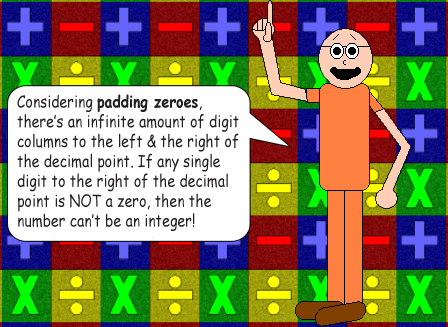

| Digit in tens' column is… | Digit in ones' column | Ones' digit in even number's half |
| Even | 0 | 0 |
| Odd | 0 | 5 |
| Even | 2 | 1 |
| Odd | 2 | 6 |
| Even | 4 | 2 |
| Odd | 4 | 7 |
| Even | 6 | 3 |
| Odd | 6 | 8 |
| Even | 8 | 4 |
| Odd | 8 | 9 |
12 ÷ 2 = 6
22 ÷ 2 = 11
02 ÷ 2 = 1
Can you tell why I put that padding zero there? That's right! Zero is an even number, so the digit in the ones' column of the half is 1! If the even number has a single digit, then the tens' column digit is automatically equal to zero(0)! But let's add a digit in the hundreds' column!
102 ÷ 2 = 51
Voila! We still have the digit 1 in the ones' column of the half! Including a hundreds' column, or a thousands' column and so on won't make a difference in this math trick! The table above remains correct no matter how many digit columns you include! The trick focuses on the tens' column & the ones' column.
14 ÷ 2 = 7
64 ÷ 2 = 32
306 ÷ 2 = 153
836 ÷ 2 = 418
88 ÷ 2 = 44
158 ÷ 2 = 79
370 ÷ 2 = 185
480 ÷ 2 = 240
Look at the ones' & tens' digits in the dividends, then the ones' digit in the quotients. (All of the quotients are halves to the dividends since each dividend is divided by 2)

It doesn't matter how digits the even integer has! The table above remains accurate about its half!
1,006 ÷ 2 = 503
10,006 ÷ 2 = 5,003
250,006 ÷ 2 = 125,003
175,036 ÷ 2 = 87,518
630,000,036 ÷ 2 = 315,000,018

Back to Index Page Back to Math Trick Menu
© Derek Cumberbatch